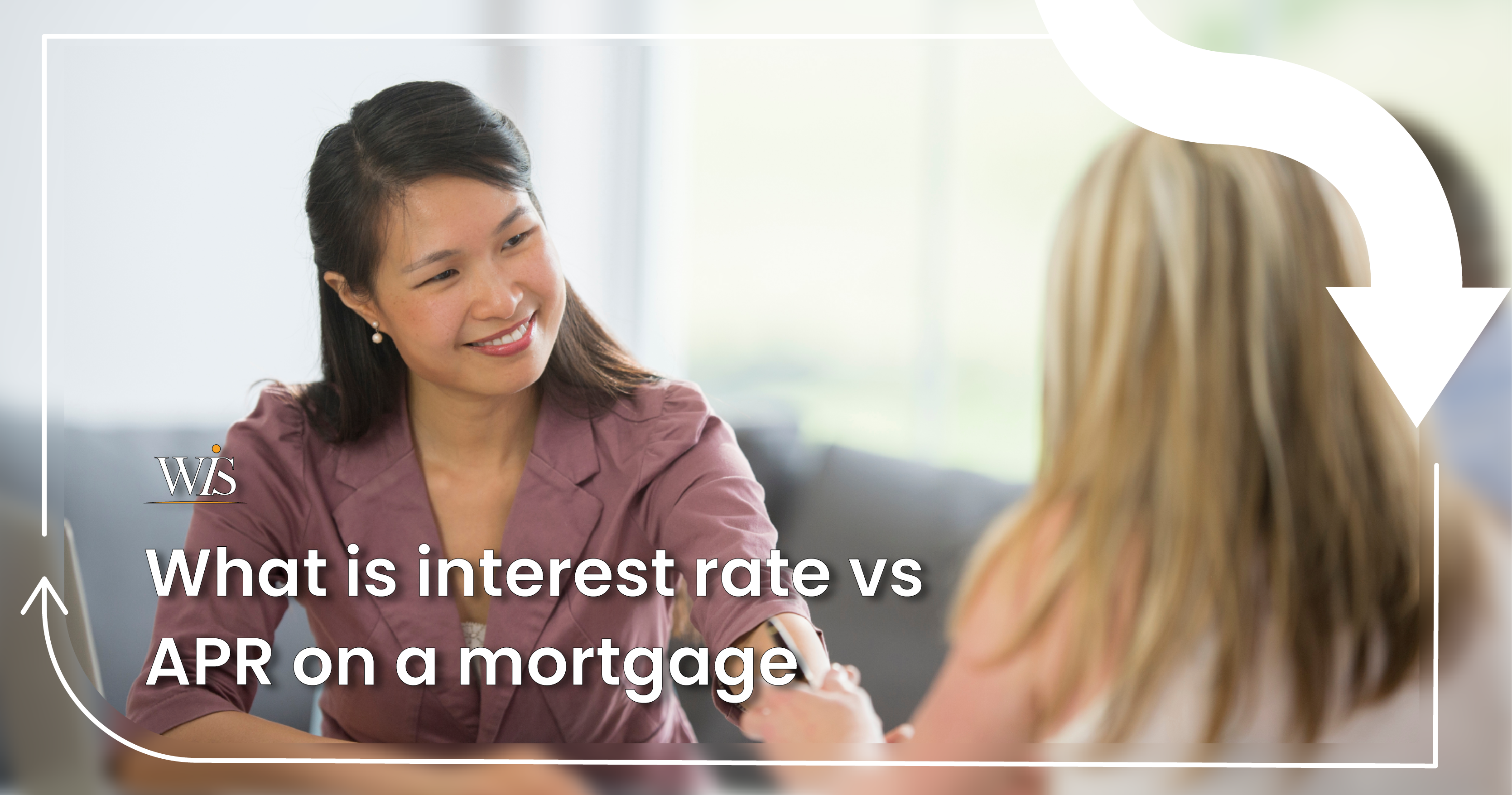Use the quick and simple quotation system to get a mortgage quote in seconds.

23rd June 2023
When you're looking for a mortgage, it's important to understand the various terms and factors that affect the total cost of your loan. One of the most significant factors to consider is the interest rate and the annual percentage rate (APR). In this article, we answer the commonly asked question, what is interest rate vs APR on a mortgage?
Mortgage interest rates refer to the cost of borrowing money from a lender to purchase a property. These rates can be fixed or variable and depend on several factors, including the current market conditions, the lender's policies and the borrower's credit score. Typically, a higher credit score will result in a lower mortgage interest rate, and vice versa.
find me a mortgageThe annual percentage rate (APR) is a measure of the total cost of a mortgage over the loan term, including arrangement fees, valuation fees and legal fees. This rate is expressed as a percentage of the total loan amount and provides borrowers with a more accurate estimate of the overall cost of their mortgage. For this reason, the APR is usually higher than the interest rate.
The main difference between mortgage interest rates and APR is that interest rates only reflect the cost of borrowing money, while APR includes additional fees and charges. Interest rates are typically advertised as the headline rate, while APR is a more accurate representation of the true cost of a mortgage.
For example, if a mortgage has an interest rate of 2%, but there are additional fees and charges of 1% of the loan amount, the APR would be 3%. This means that the borrower will be paying a total of 3% of the loan amount in interest and fees over the term of the loan.
APR is a standardised way of comparing loans, providing an accurate figure that can help you to understand how much you will pay back over time. The APR takes into account all costs associated with borrowing money, so it's intended to give you more information about what you're really paying. In comparison, the interest rate is sometimes considered to be slightly deceiving because it doesn't include any other fees or charges that might be tacked on later.
By understanding the APR, you can make an informed decision when comparing mortgage offers from different lenders. While a mortgage with a lower interest rate may seem like the better deal, it's important to also consider the other fees and charges that can add to the overall cost of the mortgage. The APR provides a way to compare mortgages on a like-for-like basis, so you can see which one is really the best value for you. However, it's important to make sure you're comparing offers for the exact same type of mortgage when looking at APR, as the APR on a 15-year fixed-rate mortgage compared to the APR on a 30-year fixed-rate mortgage won't tell you anything.
In addition, the APR is a requirement for all lenders in the UK under the Consumer Credit Act. Lenders are required to provide borrowers with an APR quote as part of their mortgage offer. This means that understanding APR is essential for making a fully informed decision when applying for a mortgage.
Mortgage interest rates are determined by lenders and they calculate them using several factors, including the Bank of England's base rate, the level of competition in the market, the loan-to-value and the borrower's credit history. The latter, in particular, helps the lender to determine the borrower's risk profile and set the interest rate accordingly.
APR, meanwhile, is calculated using a number of steps to provide a more accurate estimate of the total cost of the mortgage over the loan term. To accurately calculate the APR, you need to use the following formula:
APR = ([(Interest charges + fees) / loan amount] / Number of days in loan term) x 365 x 100
Interest charges = Principle amount x interest rate x number of years to repay
For example, let's take a 30-year fixed-rate mortgage for a £350,000 home where the buyer has a 20% deposit (£70,000). The borrower repays on the principle amount of £280,000 at an advertised interest rate of 5%. However, the borrower also has to pay 1% in fees that add up to £2800. Those extra costs make the APR 5.033%, which is effectively the total amount of interest being paid.
The calculation would be:
Interest charges = £280,000 x 0.05 x 30 years
APR = ([(£420,000 + £2800) / £280,000] / 10950 days) x 365 x 100
Annual percentage rate (APR) = 5.033%
We are an independent mortgage broker and advisor in southern England, providing advice to those living in the Kent, London, Essex and Buckinghamshire areas. However, we also cover all of the UK, so even if you are not based in the south, we're more than happy to help you. Why not check out our mortgage calculators to get a better idea of what you can afford?
We want all our customers get the best out of their experience with our team, so reach out to us today if you have any questions about what is interest rate vs APR on a mortgage.
As a mortgage is secured against your home/property, it may be repossessed if you do not keep up with the mortgage repayments.
Contact UsUse the quick and simple quotation system to get a mortgage quote in seconds.
SHARE WEBPAGE